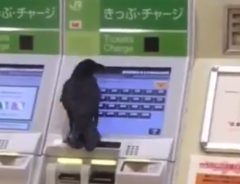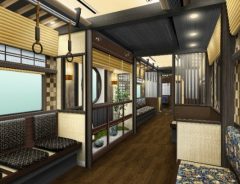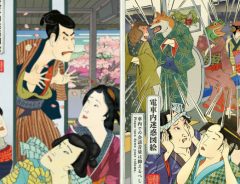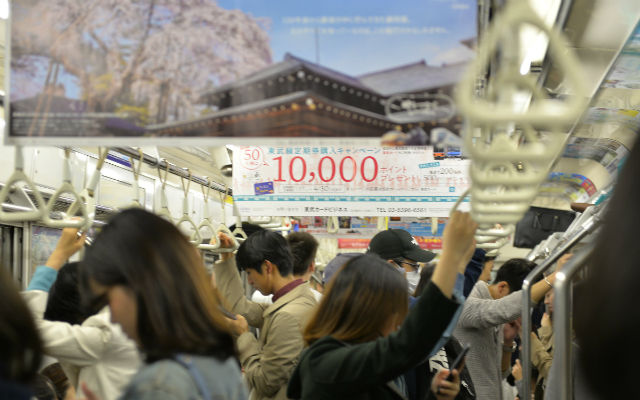Related Article
-

Clever Crow Nabs Credit Card Trying to Buy Train Ticket in Japan
-

Japan’s Sightseeing Train Boasts Traditional and Stylish Interior Design Inspired by Kyoto Townhouses
-

Japanese train station convinces commuters that Tom Cruise is staring at them
-

Japanese Railway Uses Ukiyo-e Style Posters To Teach Train Etiquette
-

Get Up Close and Personal with Penguins on Japanese Trainline
-

Japanese Train Fanatic Builds Extremely Life-Like Train Carriage Room In His House!



One of the many draws for tourists in Japan is the train system that connects the country from tip to toe, with Tokyo’s notoriously crowded railways being one of the highlights on any trip to the country.
Everyday the cars fill to the brim with people on their daily commute to and from work, and it’s not entirely unusual to find an overeager YouTuber packed in amongst the ranks of businessmen, documenting this “sardine can” experience.
Yet with the risks of COVID-19 being spread via what has been dubbed “the three c’s” – closed spaces, crowded places and close contact situations – right now being on a busy train in Japan’s capital city is not high on anyone’s agenda.
To help commuters decide on when to catch a ride, the East Japan Railway Company (from hereon JR East) announced plans to expand and upgrade it’s smartphone app which informs the user of how busy the cars are.
The app has actually been available to customers since March 2014, however, up until now, the service had only been able to give information about the JR Yamanote Line which links the major tourist and business locations in central Tokyo.
Calls for expansion of the app were made after the company saw an increase of users during the outbreak of COVID-19, with commuters concerned about picking up the virus during peak travel hours.
The upgraded application will see real-time information regarding car and station congestion, and will be expanded to include, in addition to the Yamanote Line, information from train lines within the capital and the greater Tokyo region.
Congestion information will be released to application users and be updated every 5 minutes, and will be divided into five levels, with colour codes ranging from “plenty of seats available” to “extremely crowded”.
The company plans to roll out the upgraded version of the app from the middle of July.
Currently the company has only announced it will be updating the Japanese version of the application, but as they also feature an app in English, it can be expected that the new function will likely become available there as well.
According to Time Out Tokyo, the application is expected to roll out the new feature to include the following 19 train lines from mid-July: